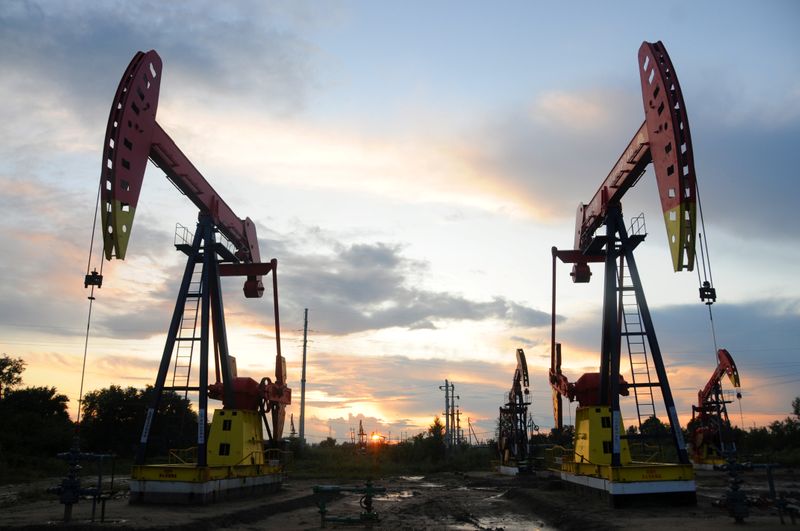By Sonali Paul and Seng Li Peng
MELBOURNE/SINGAPORE (Reuters) - Oil prices were steady on Thursday as renewed hopes for U.S. fiscal stimulus provided support but concerns over rising infections hampering fuel demand capped gains.
U.S. West Texas Intermediate (WTI) crude (CLc1) futures eased 1 cent to $40.21 a barrel at 0532 GMT , after jumping 2.4% on Wednesday.
Brent crude (LCOc1) futures climbed 2 cents to $42.32 a barrel, after falling 0.2% overnight.
The Trump administration has proposed a new stimulus package to House Democrats worth over $1.5 trillion.
"Even if Trump does sign it must still be approved and originated by the House. Still, it appears progress is being made with the Republicans at $1.5 trillion, and the Democrats at $2.2 trillion," said Jeffrey Halley, senior market analyst for Asia Pacific of OANDA.
"Now that we have a market spread, the odds of a compromise have increased dramatically and this will be positive for markets."
Earlier, U.S. Treasury Secretary Steven Mnuchin said talks with House Speaker Nancy Pelosi made progress on COVID-19 relief legislation, and the House of Representatives postponed a vote on a $2.2 trillion Democratic coronavirus plan to allow more time for a bipartisan deal to come together.
WTI jumped on Wednesday after data from the U.S. Energy Information Administration showed crude and distillate inventories, which include diesel and jet fuel, fell more than expected in the latest week. [EIA/S]
But demand worries remain as the pandemic has infected over 7.2 million and killed more than 206,000 people in the United States.
Growing supply from the Organization of the Petroleum Exporting Countries (OPEC) also weighed on the market, with output having risen by 160,000 barrels per day (bpd) in September from August as some Libyan installations restarted and Iran's exports grew, a Reuters survey found.
ANZ Research noted reports of Russia increasing production beyond its quota within the grouping of OPEC and its allies, called OPEC+.
"Increasing supplies from OPEC+ will be risking their rebalancing effort as the market is still grappling with weak demand," ANZ Research said.
In a Reuters survey, 40 analysts and economists now see global demand contracting by 8 million-9.8 million bpd this year versus 8 million-10 million bpd consensus last month.
However they trimmed their outlook for oil prices this year, with the average of forecasts for benchmark Brent crude at $42.48 a barrel for 2020 down from an average forecast of $42.75 last month.

The 2020 U.S. crude price outlook was at $38.70 per barrel versus $38.82 predicted in August.